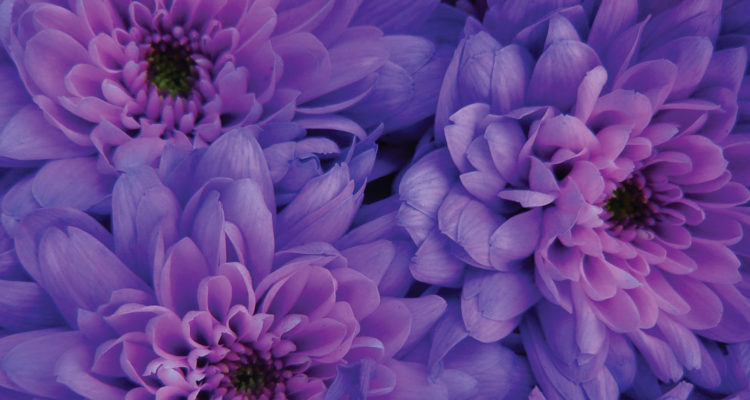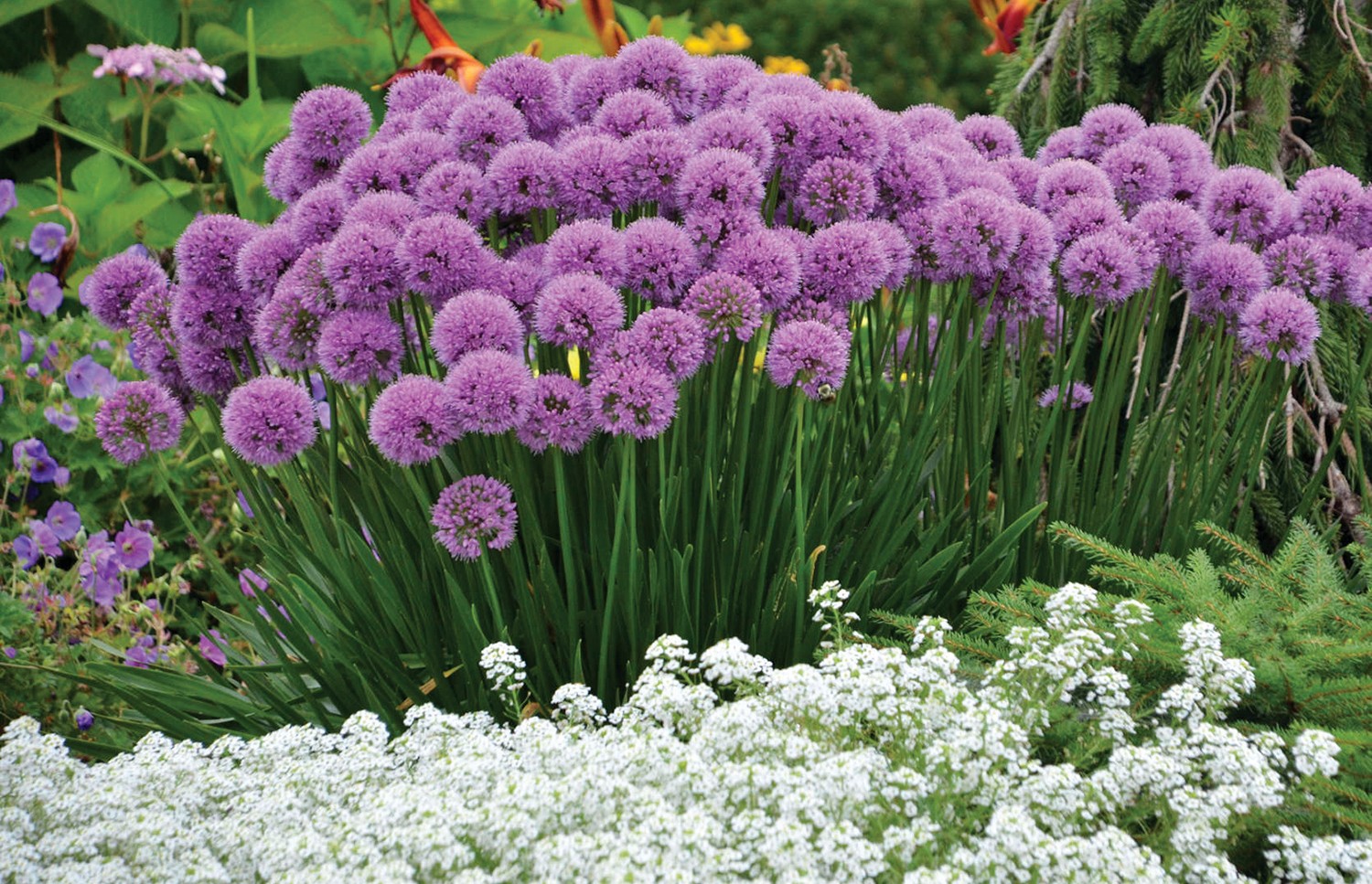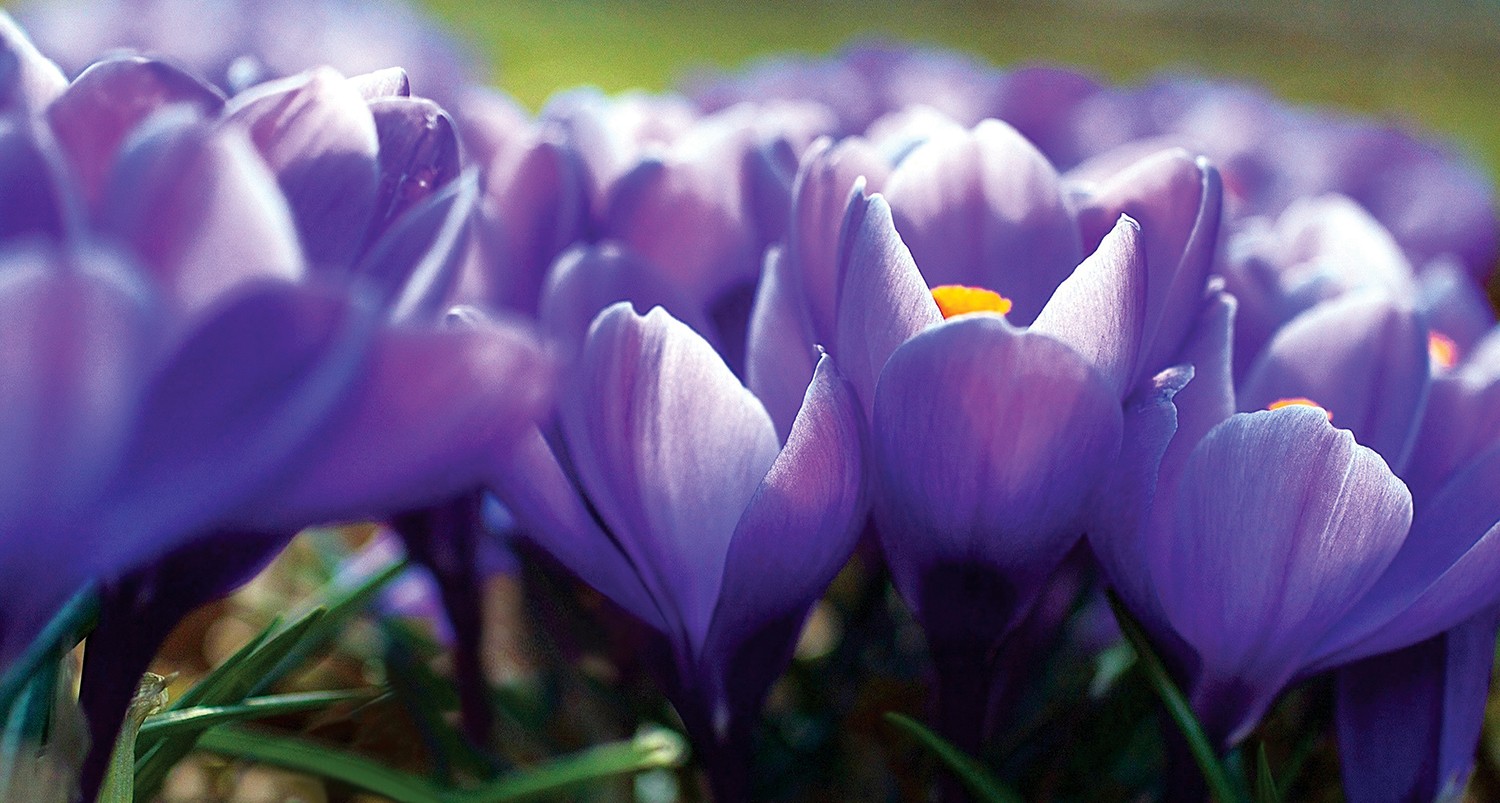This Season’s Eye-Catching Color Palette for Your Garden
Story by Ann Butenas
Now that Spring is in bloom, it seems as if we are surrounded by vibrant color everywhere, and thanks to the Pantone 2018 Color of the Year – Ultra Violet – our eyes are treated to a vibrant symphony of color that inspires imagination and creativity. While Ultra Violet is certainly a welcome guest to your interior design ideas this year, it can also become a harmonious addition to your outdoor landscape.
A deep and mesmerizing color, Ultra Violet is a blue-based purple that plays well with lighter shades, including white, creams, pinks, greens and lavenders. A confident and ambitious tone, Ultra Violet is bold and unafraid in its presentation, adding the perfect dash of dramatic color to your flower beds, plants and surrounding landscapes.
Matt Stueck, Vice President of Suburban Lawn & Garden, offered some insight on how to incorporate this expressive color into your garden.
KCH&S: How would you describe the color Ultra Violet?
Stueck: It’s a darker shade of purple, not lavender, which allows you to bring in the element of red, giving you more options, especially with plants on the hardier spectrum.
KCH&S: What types of purple flowers lend themselves well to the KC landscape?
Stueck: Perennials with violet color do well. One example is ‘Millenium’ Allium, which was named the Perennial Plant Association’s ‘2018 Plant of the Year.’ And it does really well in our often harsh Kansas City climate. Although it’s not a brand new plant, it is just now becoming more prevalent in local landscapes. It’s a late season bloomer, so it peaks in August through October. Although many people prefer flowers that bloom earlier, Millenium Allium gives its impact later in the year.
KCH&S: What colors of flowers coordinate well with the ultra violet color?
Stueck: Orange and purples can be complementary with Ultra Violet, depending on the shade. Yellow can sometimes work. White is extremely popular and also readily available. I would lean towards white, however, as it will make the dark purple stand out. and especially with dark purple shades. Some of the white flowers to use include Impatiens, Geraniums and Bacopa. You could combine an Angelface Blue Angelonia, for example, which is dark purple, with something white such as Vanilla Butterfly Argyranthemum or Snow Princess Sweet Alyssum.
KCH&S: What type of personality does ultra violet bring to the landscape?
Stueck: I see ultra violet/purple as a very bold color in many ways. It is also less formal. Blue is one of the least common bloom colors in the plant world. So bluish purples, like Ultra Violet which are more available, become the next best thing. There are also a lot of hardy perennials in the purple spectrum, and they tend to be more wild and native in appearance.
KCH&S: Do you see this color catching on as a statement piece in people’s gardens?
Stueck: While these Pantone colors of the Year do affect trends in clothing and home decor, with gardening, it can be more of a long-term commitment, especially with perennials as they are long-term plants. Other issues to consider include how big they will get and how tall they will get.
KCH&S: What should people consider if they decide to incorporate this color into their gardens?
Stueck: Too many people will get stuck on figuring out what other plants will coordinate with this color, but what they have to also keep in mind is texture. It is important to compare and contrast foliage. You need different textures for contrast, such as putting a broad leaf plant next to a plant with ferny, smaller leaves. You should have different foliage and shapes and this may cause you to go beyond your comfort zone. Yes, color is important, but you need texture for contrast.
KCH&S: Final thoughts?
Stueck: Unlike previous Pantone Colors of the Year, Ultra Violet is available in a wide variety of shrubs, perennials and flowers, which will give consumers a great opportunity to incorporate it into their landscaping or gardens.









